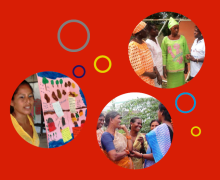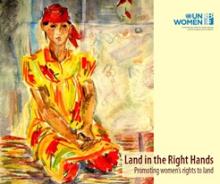/ library resources
Showing items 91 through 99 of 73429.[...] In our understanding of the green economy, one thing is clear: rural women have already faced eviction or exclusion from land ‘grabbed’ for powerful green agendas that are not their own.
The new baseline report on ActionAid's Women's Land Rights Project highlights the need for indigenous women in Guatemala, Dalit women in India, and rural women affected by HIV and AIDS in Sierra Leone to gain actual realisation of their land rights.
This brochure provides the necessary information for people living in communal areas to have their land rights registered. The brochure also tackles why land has to be registered; who is responsible for the various aspects of the process; and how land disputes are handled.
This document describes the consultation of traditional authorities in Namibia on how communal land is managed and on the registration of customary land rights.
Urban LandMark has developed a booklet that focuses on the creation, measurement and capture of value from transport interchanges. It also looks into the opportunities/obstacles to municipalities' use of value capture instruments.
News, views and experiences on securing rights to rangelands from East Africa and beyond.
Papers and presentations from the OHCHR - UN Women expert group meeting on "Good practices in realizing women's rights to produc
Here it is an interesting publication from UN Women on the work done by the UN entity - and UNIFEM before its establishment in 2011 - to promote women's empowerment in Kyrgyzstan and Tajikistan through land rights.
Paginación
Land Library Search
Through our robust search engine, you can search for any item of the over 64,800 highly curated resources in the Land Library.
If you would like to find an overview of what is possible, feel free to peruse the Search Guide.




